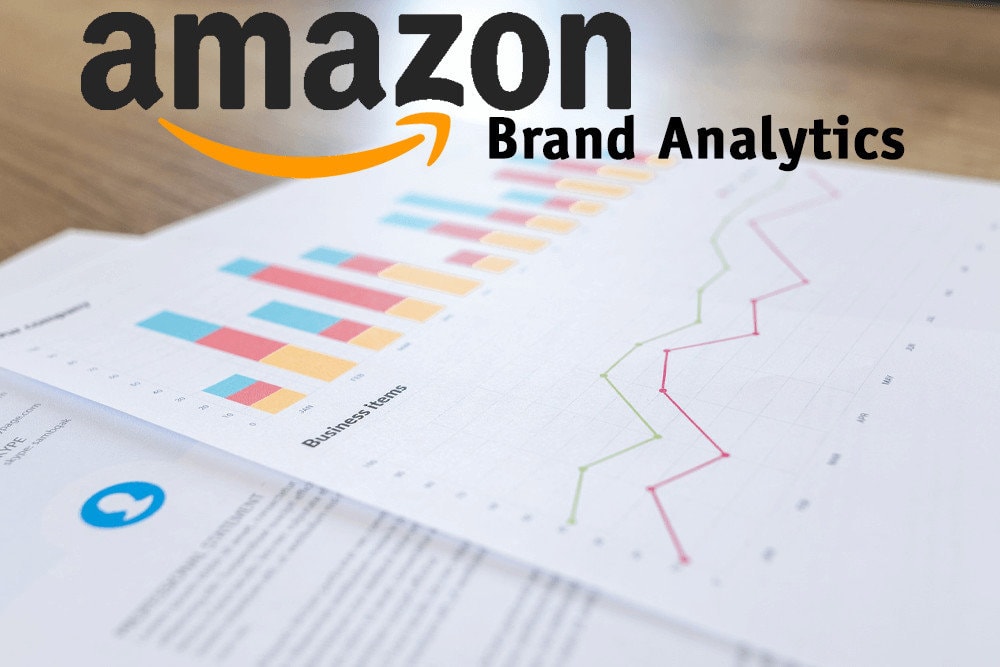If you are a brand-registered seller, then you can access the Using Amazon Brand Analytics tool from your seller central account. It is one of the handiest and best features that Amazon has ever released.
Furthermore, it has some amazing data hidden and is capable to give valuable insights. By showing which keywords exactly are converting the best, the tool is exclusively designed to help any brand increase its advertising budgets and bids for those search terms/keywords.
Thus, by helping brands show as to what ASINs are acquiring the most number of clicks for a specific keyword, it encourages a brand to allocate extra budget to target specific ASINs.
Now, since advertising is one of the wildly profitable and fastest-growing segments of Amazon, it is worth giving advertisers the necessary data to justify allocating more budget and better advertising plan on Amazon.
Here is how the Amazon Brand Analytics feature can help you increase your sales:
Criteria for Amazon Brand Analytics
In order to access the Amazon Brand Analytics tool, you should meet these eligibility criteria:
- Have access to Brand Analytics
- Sell on Amazon.com
Amazon Brand Analytics (ABA) is accessible to every 3P seller who is enrolled in its Brand Registry program.
Note: If you do not have access to the Brand Analytics feature, it only means that you haven’t been recognized as someone who has met the criteria defined by the Amazon Brand Registry.
Now, if you know that you don’t fit into these criteria, you can contact the Seller Support team anytime.
How Does Amazon Brand Analytics Tool Work?
Sign-in to your Seller Central and navigate to the tab called Reports and click Brand Analytics to access it.
Brand Analytics helps you give you some valuable data that you are looking for.
Here’s how it works:
Step 1: Select a specific date range from the dropdown list for viewing the report.
Step 2: Use related search terms/keywords, product names/Amazon ASINs in order to obtain relevant data.
Step 3: You can even specify your search criteria by clicking through the product departments.
What is the Amazon Search Term Report?
The Amazon Search Terms report includes the details of:
- Most popularly searched keywords on Amazon during a time period
- A search term/keyword’s search frequency rank
- Top 3 products, which customers clicked after searching for a term
- The top 3 products’ conversion rate and click-share
A Brand Owner can look for a specific term/keyword to check for products, which Amazon customers are clicking after searching for a specific key term. The Brand Owner can also find out what terms drive Amazon customers to click a product.
Here is a quick overview of some key elements that you will see in the Amazon Search Terms report.
- Search Term
Search terms or keywords, however you call it, are a combination of words/set of words that Amazon shoppers use to search for a product.
- Search Frequency Rank (SFR)
The “search frequency rank” is the rank (numeric) of a search term based on its popularity for a particular time period.
- Click Share & Conversion Share
Click share = No. of times customers clicked on a specific product for a search term / No. of times customers clicked on any product for a search term
Similarly, “conversion share” is also calculated in percentage.
Conversion share = No. of times customers bought a specific product for a search term / No. of times customers bought any product for a search term
Benefits of Amazon Brand Analytics
Ever since Amazon has become one of the world’s biggest earning retail giants, there are more sellers signing up. With this, the competition is becoming steeper in most domains and therefore, it has become crucial to have access to all your competitors’ data. This data helps incline your market share and build your brand bigger.
Since ABA is more like an enriched data bank, which allows you to “spy” or “keep an eye” on your competitors, there are valid reasons to make use of it. It enables you to classify the key factors that help in driving your major competitors’ sales.
Some of its benefits are:
- It is completely free
- It helps you take potential keywords
- It helps you with the right marketing strategies
- It helps to identify the shopping behaviors of your target audience
- It is absolutely user-friendly
- It gives deeper insights about your products
